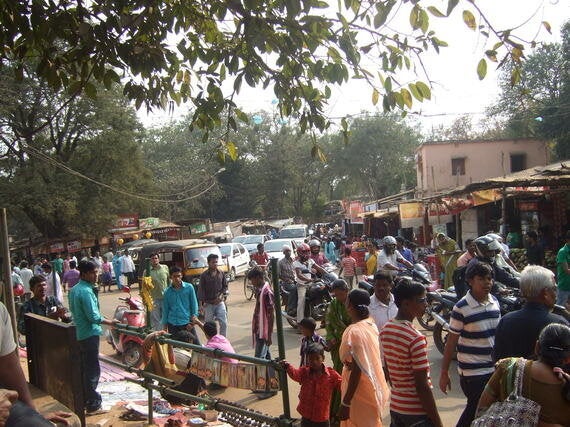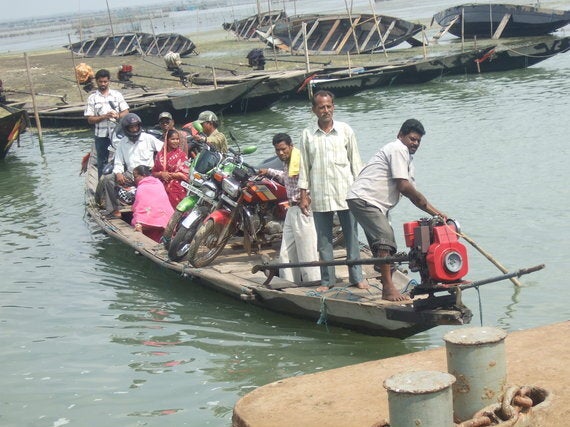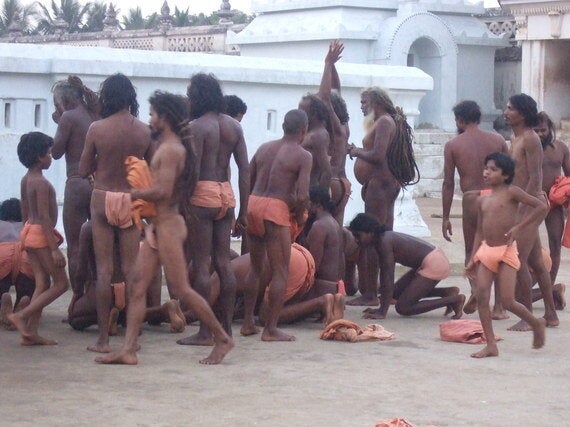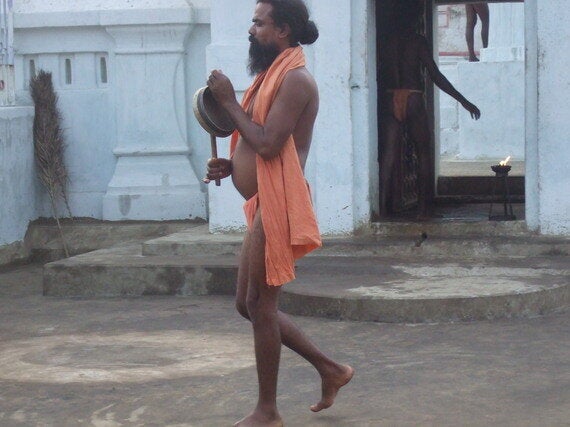India has a population nearly four times that of the United States. And as a visitor from the west, it often seems like all of the people want to talk to you. What is your name? Where are you from? How many people in your family? What do you do? But it's not like being hassled on a beach to buy something, it is genuine interest. As an Englishman, I find even the casual, American "how ya doin?" a little embarrassing, so a walk down any street in India is a challenge.

Of course the most important people of all when visiting India are the ones who will help me to find a way through the chaotic maze of human life; my tour guides. Negotiators, interpreters, educators and general carers would be a more accurate description. I have picked up a smattering of Hindi, but it is of no use to me here in Odisha on the Eastern coast of India where the language spoken is Oriya.
It was in Odisha that Buddhism really took off. Although the Buddha became enlightened in Bodh Gaya in Bihar, a lot further north, it wasn't until the third century BC, with King Ashoka, that it spread all over India. And it was from here that it was exported further east to Thailand and beyond. After defeating the Kalingan kings here in Odisha in a bloody campaign, King Ashok changed his mind about killing, converted to Buddhism, drew a line under his empire, and had his famous edicts carved in the rocks all over India, encouraging peace, fairness and good moral behaviour. The one at Dhauli in Odisha is the very first stone edict. Although not the most romantic of sites - the edicts are kept, quite near the road, behind a sheet of perspex and some ineffectual iron gates - it was inspiring to hear Prema, my knowledgeable tour guide translate these two thousand year old decrees about peace and human rights.
My next guide is Sanghmeetra who will show me around the surrounding countryside, villages, wild-life parks and camps.

Sanghmeetra has started a wild-life camp at Bhitar Kanika where I stay in a large zip-up tent and there are jaunts to see the monster saline crocodiles. There were also deer, mud-skipper fish, one-armed crabs, giant monitor lizards, monkeys, and many species of birds. Getting there is challenging; a long drive, a crowded boat trip, then a bumpy ride on the back of a motor-cycle luggage trolley. But even here, in this remote place, there are hundreds of people. The camp-site is not in the middle of a forest somewhere, or in some uninhabited desert, but on a narrow plot, right in the middle of a thriving village. So I wake to the sights and sounds of village life around me; not just cocks crowing, but cow-pats being slapped, old women carrying massive bundles of sticks, younger women with heavy water pails, uniformed school children with combed hair and backpacks, and a man, somewhere, shouting endlessly into his mobile phone. Even in some tribal zones there are mobile phones.
The last of my guides to mention - or hosts as it would be more appropriate to call them - is of course my driver, Nanda, a calm guy with a quiet sense of humour. It is Nanda who is my passport into the extraordinary lives of all the people I have met and my final visit is the most peculiar of all.
The Javanda Alekh Mahima Ashram is a monastery complex in the Dhenkanal area where the saddhus graduate from clothes, to a loin cloth, to a strip of tree bark between their legs. Their hair is unkempt and grows into dreadlocks. All of this is to avoid "attachment" to worldly things and possessions. You can see them walking around in the streets of the villages nearby, sometimes carrying umbrellas - one old man with massive dreads and a mere piece of tree-bark covering his privates, carrying a plastic supermarket shopping bag.
Just before sunset there is a cacophony of banging bells and pans as all of the saddhus and initiates gather in the main square of the ashram to perform their sundown ritual. They don't believe in eating after the sun has gone down. They only eat one meal a day, although, judging by the bellies on some of the older saddhus, it must be a fairly substantial one.
The old and the young monks arrive, all beating bells of various sizes. The noise is deafening. They then make a procession wafting peacock feathers around the central temple, in age order, with the oldest, most bearded, through medium sized beards, bum-fluff and right down to boys who must have been ten years old or so. Evidently, children - both boys and girls - are promised to the ashram by their families and start there young.
They didn't seem to mind the fact that there were six or seven people watching this ceremony, catching it on their iPads. In fact they almost relished the performance aspect of it. Once again I was the only white face.

Once the procession is finished they come out and clap before prostrating themselves repeatedly on the ground. Then they crowd into a huddle in which each saddhu must touch the feet of his seniors. Which leaves a lot of foot-touching for the youngest novices. The younger boys secretly punch and josh each other behind their elder's backs.
http://nigelplaner.co.uk/prod/travelhttp://nigelplaner.co.uk/prod/travel
